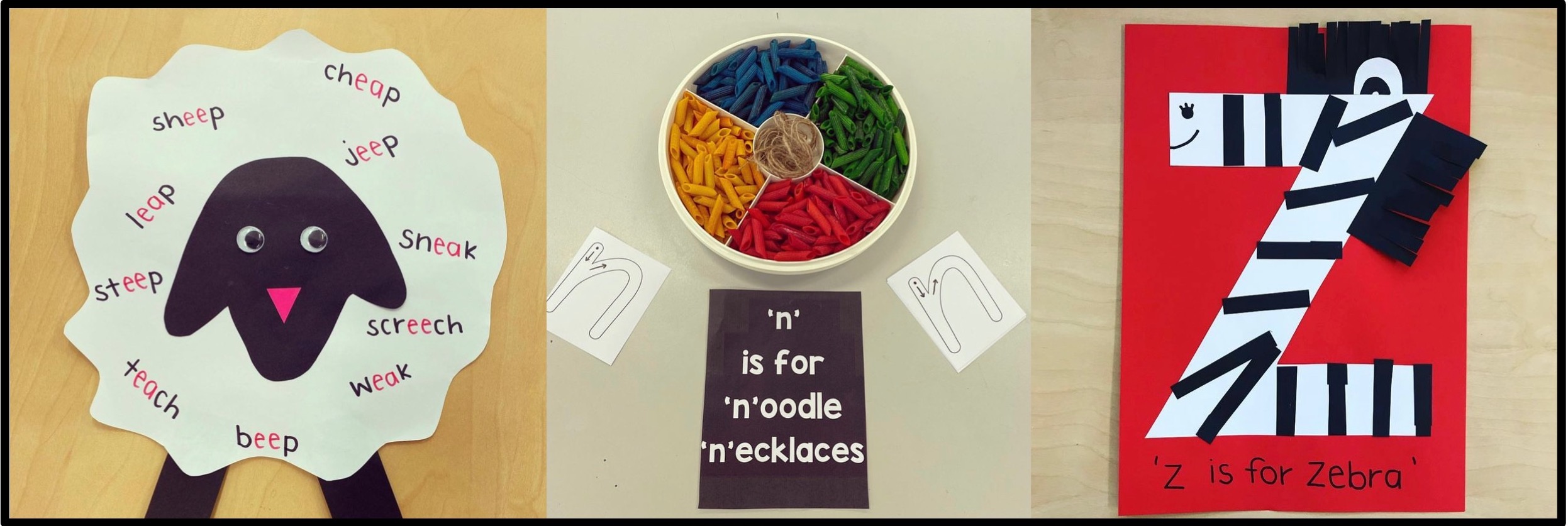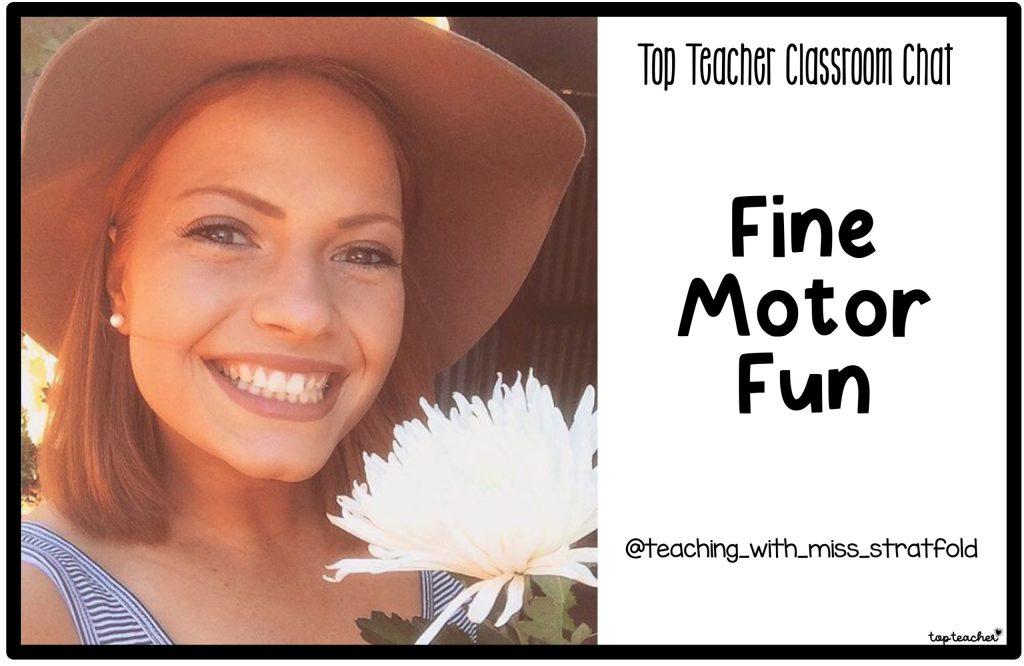This fortnight’s blog post comes from the amazing Jess from @teaching_with_miss_stratfold over on Instagram. We are super lucky to have Jess share with us her love of all things fine motor! 💛

I believe creating a rich fine motor-based program is crucial in any early years classroom. Children in the early years need multiple opportunities to work, exercise and strengthen the small muscles in their fingers and hands.
Ever since I became a teacher, I have had an interest in implementing fine motor based activities into my teaching as it has so many benefits for my students. In one of my first years of teaching, I taught a Year 2/3 class where multiple children had poor fine motor skills, and this affected their ability and stamina in writing-based tasks. I remember lots of children complaining of having sore hands and struggling to write more than 2-3 sentences in a whole 50-minute lesson. I quickly learnt that the best way to get these children to write more was to strengthen the fine muscles in their hands. We used to spend 15 minutes after Lunch each day squishing playdough, using chopsticks to pick up and manoeuvre different objects including pom poms, marbles etc, using pipettes to squeeze out water into containers. From completing these daily activities, I saw a huge transformation in my student’s fine motor skills and the improvement in their handwriting and confidence in writing tasks was so exciting and will forever be one of my favourite accomplishments in my teaching career.
The following year, I won my first ever Reception and Year 1 position and one of the first things I did when I started planning was implementing multiple fine motor-based activities so that these children wouldn’t end up like the Year 2/3 students that I had taught previously. Since then, I have taught Reception and Year 1 for the past seven years and absolutely love it! My love and passion for creating a rich fine motor-based program continues to grow and grow the more I learn and discover about fine motor.
Fine motor skills are essential for performing everyday skills both academic, and play-based activities and help develop greater independence in children i.e., being able to get dressed and feed yourself. If children don’t get opportunities to strengthen their fine motor skills, they can become easily frustrated, lack confidence, struggle to complete learning tasks to the best of their ability and might even refuse to engage in tasks.


Every Friday morning for the first 30 minutes of the day, I set up 5-6 fine motor stations for the children to participate in. I have found the children get really excited to come to school on Friday as they love starting their day with fun, play-based fine motor activities.

I avoid using worksheets as much as I can in my classroom and instead, my students complete lots of activities using their hands and learning through play. This includes games, using manipulatives, and using whiteboards and markers. By introducing new Literacy and Numeracy concepts through play-based learning activities, students can make connections by seeing and holding their discoveries in their hands. It engages the brain in different ways, allows children to make connections and develop their vocabulary and encourages abstract thinking.
Each week in our Literacy and Numeracy, we complete at least 2-3 lessons where we are play lots of games and complete problem-solving based tasks in groups. We also complete at least 1 craft a week to show our understanding of the learning. Our crafts normally involve lots of cutting and gluing.

Before my Handwriting lessons, I always choose a simple 5-minute fine motor warm-up for the class to complete to warm up their hands and prepare for writing. Our warmups include squishing play dough and making long play dough snakes, singing songs with our hands, completing actions, finger tapping where I call out 2 fingers that the children need to tap together on each hand, pencil warm-ups etc. These little warm-ups prepare the students for our handwriting and also provide another opportunity to work on their fine motor skills.


Each day in Phonics we complete a sound of the day art craft to help consolidate the learning. Cutting-based crafts are lots of fun but most importantly, they are a great way to strengthen your students’ hand and finger strength. I also complete this with my Year 1s with their Spelling program. Once a week, I create a cutting craft linked to the spelling focus of the week for students to complete.

💛 Less is best! Keep the setup of your stations simple as it makes the pack up simple and will help you to stay motivated to do stations regularly. Also remember, stations encourage students to work independently in a group so don’t overcomplicate the activity and the amount of equipment.
💛 Have stations and groups displayed in your class with all your students’ names on it.
Often when I do stations with little ones, there will always be 1 or 2 students that forget what group they were in or what activity they should be doing next. Having the stations and groups displayed visually can help students independently solve the ‘where to next’ problem.
💛 You don’t need expensive resources and tools to help work on fine motor in your stations. Have a look through your cupboards at school and home. Lots of kitchen and bathroom items are amazing for fine motor! Including tongs, chopsticks, patty pan tins, spray bottles, cups, pegs, tweezers, toothbrushes, earbuds etc. I prefer to buy items from the supermarket or from shops like Kmart or Big W rather than buying from teaching resource companies (which can be very expensive).
💛 Use a timer. YouTube has some wonderful countdown timers that you can use on your whiteboards or computers as a visual for your students and to help you keep track of time in your lessons.
💛 Make sure you model to your students how to complete each station and how to respectfully use the equipment before you send them off.
💛 Create a Fine Motor cupboard or box that you can easily store all your fine motor tools, manipulatives and games/resources in. This makes setting up easier rather than keeping things in multiple different cupboards or places in your classroom.

1. Pom poms
2. Tongs
3. Chopsticks
4. Pegs
5. Circle dot stickers
6. Scissors
7. Pipettes
8. Plastic cups (all different sizes)
9. LEGO
10. Popsticks
11. Wipe and Swipe boards
12. Paper
13. Marbles
14. Play Dough
15. Paint
Jess, you are such an inspiration! Thanks so much for sharing with us how you champion fine motor in your classroom. Most of the pics above come from our SUPER comprehensive Fine Motor Task Cards – click here to download it for yourself 💛
How do you incorporate fine motor into your daily routine?





